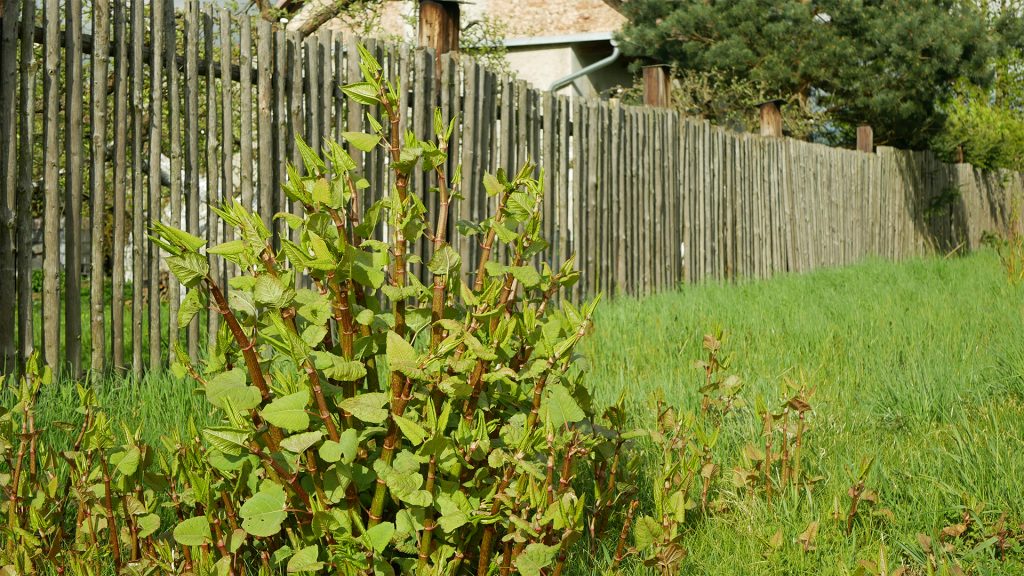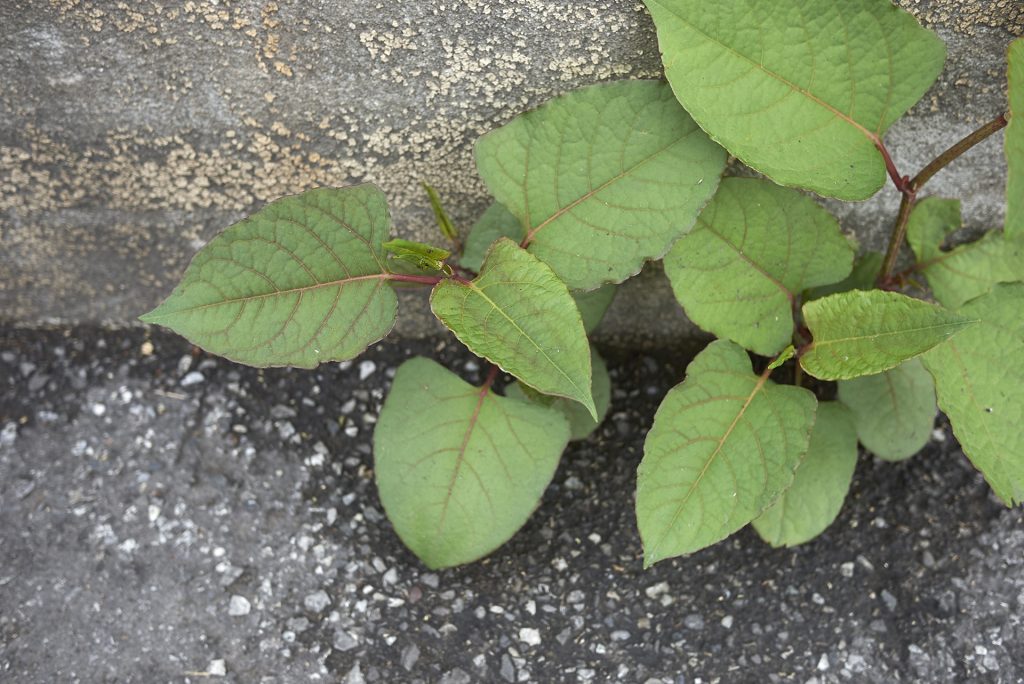Japanese knotweed (also known as Fallopia japonica) is a perennial weed that originated in Japan. When it grows in its native country, there are funguses and natural insects within the Japanese climate that keep it under control.
Sadly, this is not the case in the UK, meaning if Japanese knotweed starts growing near your property, you have a huge problem on your hands as it’s incredibly invasive. In today’s post, we’ll be covering just what damage Japanese knotweed can do to your property including its value.

Japanese Knotweed: An Overview
Japanese knotweed was originally introduced into the UK by the Victorians, as the flowers it produced were admired by horticulturalists. While Japanese knotweed may appear pretty up top, underneath the ground where its roots can grow down for up to 3 meters, spreading across for up to 7 meters – it’s a whole different story.
As the roots grow, they seek out weaknesses in concrete, gravel and even brickwork. Growing up to 2cm a day, Japanese knotweed can soon grow through your foundations, damage your brickwork and invade your whole home.
Japanese knotweed reduces the average property price by £23,530. With 5% of all homes in the UK now affected by the problem, it’s estimated Japanese knotweed has caused homeowners a collective house price value loss of £34.12bn.

How To Get Rid Of Japanese Knotweed
Japanese knotweed will first appear looking like asparagus peeking up from the ground. It’s essential to deal with the problem as soon as you notice it, as not only will Japanese knotweed quickly spread, but you can be fined by your neighbours or any future owners of the land if you don’t report and eradicate it.
Unlike regular weeds, it’s not possible to simply spray weed killer or even pull up the roots to get rid of Japanese knotweed. It only takes a tiny fragment of the plant to spread it, and it can even be transferred via shoes or clothes. Therefore, it’s incredibly difficult to eradicate, taking 3 years on average to remove.
The government advises the methods of removal are to spray the Japanese knotweed with approved chemicals every day for 3 years, bury it or burn it. Though with burying or burning Japanese knotweed there are strict guidelines you need to follow so that you don’t inadvertently spread it elsewhere.
Another option is to sell the property and demolish it so that the ground can be excavated and the roots removed. This may need to be considered if the spread is particularly bad.
All in all, it can be incredibly distressing for homeowners when they discover Japanese knotweed on their property, especially when it’s so difficult to remove. You may require a professional survey from RICS, as well as specialist help to truly understand the scale of the problem, let alone deal with it once and for all.
Selling My House With Japanese Knotweed
You can sell a property with Japanese knotweed, though you must legally inform the buyers that the plant is present on the grounds. A difficult issue is that some banks are reluctant to lend money for a house with Japanese knotweed present, as because it’s so difficult to eradicate it could spread further through the house, reducing its value even more. In addition, you may find it tricky to attract a buyer, especially if they are not looking to take on such a risky project.
If you’re in a hurry to sell your home affected by Japanese knotweed, Cash Property Buyer might be able to help you. We’ll give you a free valuation and we won’t charge any legal fees.
Simply tell us your postcode along with some information about your property to get started. If your home meets our criteria, we’ll send you an offer within 3 working days.
For homeowners who do not want to deal with the problem themselves, selling to us offers an easy and stress-free solution. The same cannot be said for trying to deal with that pesky Japanese knotweed!